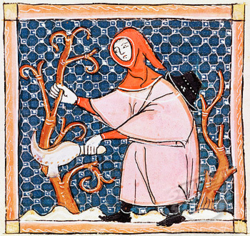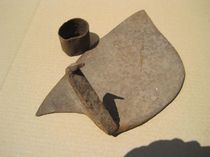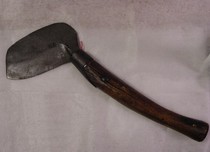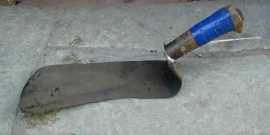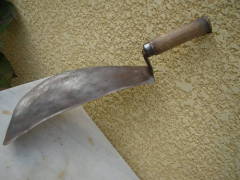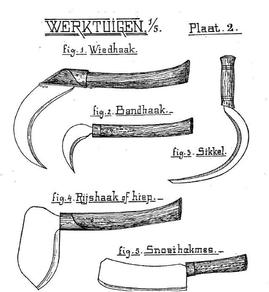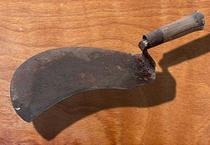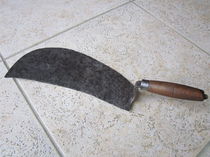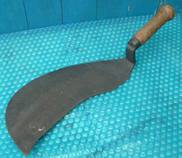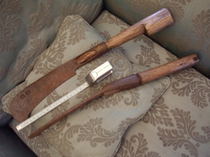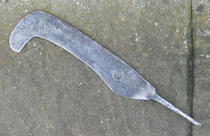Basket -making
Basket makers, working mainly in willow, have traditionaly used the billhook for harvesting the willow, and a smaller one for trimming the ends of the osiers. Today most harvesting is by machine, and secateurs are used for the trimming.
There is an excellent video of a basket maker in Picardie, France using both types here:
I've not managed to find many illustrations of English tools, although on a visit to the Perry Brothers cider factory in Somerset some 30+ years ago, I saw some sickle shaped hooks sharpened on the outside curve that were used locally, sadly no camera to hand, and I've never been back there...
